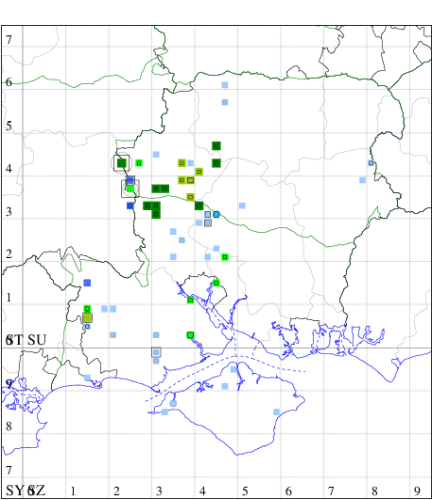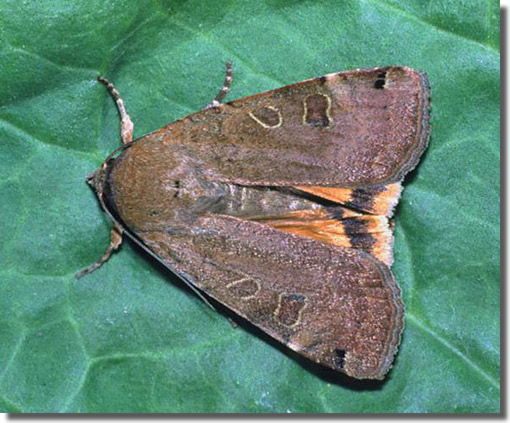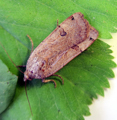Lunar Yellow Underwing
Noctua orbona
Checklist Number73.344 [B&F: 2108]
Verification
Record requires retention of specimen until confirmed, and may require dissection. Consult with CMR if unsure
Nationally scarce (Nb) in dry sandy areas, heaths and open woodland, discontinuously in parts of Britain, greatly declined, a priority species under the UK Biodiversity Action Plan. In Hampshire there are strong colonies in the Test valley, at Porton Down and Cholderton, both on the Wiltshire/Hampshire border, and the moth is recorded occasionally elsewhere, but often erroneously. There have been no Isle of Wight reports since 1894. Wingspan 38-45 mm. Distinguished from Lesser Yellow Underwing N. comes by its narrower forewing and straighter costa, and by the presence of a black mark towards the apex. Distinguished from small examples of Large Yellow Underwing N. pronuba by the presence of a curved discal spot on the hindwing which gives this species its vernacular name.
Please note that no records of this species from new sites outside of established colonies at Cholderton and Porton Down will be accepted without photographic evidence of the hindwing
Larva feeds on various grasses and herbaceous plants, including Sheep's-fescue, Wavy Hair-grass, Cock's-foot, Common Couch, Reed Canary-grass, Meadow Buttercup, Creeping Cinquefoil, Cowslip and Chickweed.


The abundance in each month is indicated as follows:
 No records
No records Very occasional
Very occasional Irregular
Irregular Uncommon
Uncommon Off-peak, but not unusual
Off-peak, but not unusual Off-peak, but not unusual
Off-peak, but not unusual Main flight time
Main flight time| J | F | M | A | M | J | J | A | S | O | N | D | |
|---|---|---|---|---|---|---|---|---|---|---|---|---|
| Adult |  |  |  |  |  |  |  |  |  |  |  |  |
| Larval |  |  |  |  |  |  |  |  |  |  |  |  |




